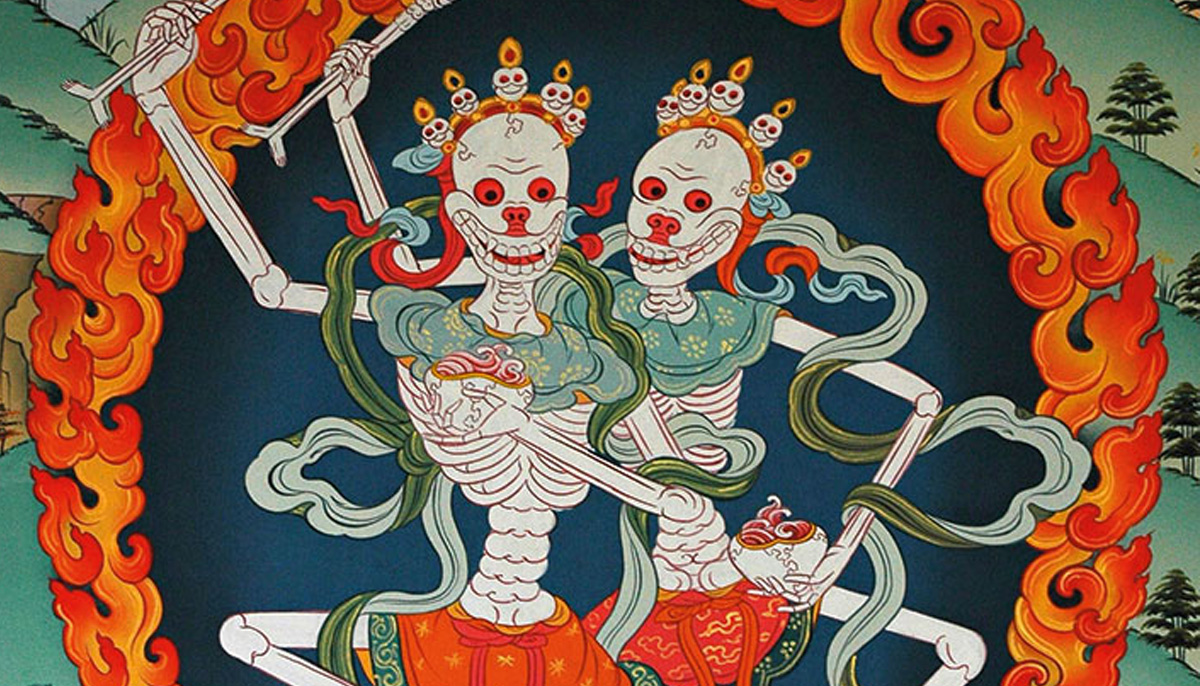Melvin McLeod: The ideal of having a “good death” is popular these days. What are your thoughts about it?
Roshi Joan Halifax: I believe that a great discovery on the journey of dying is to be free of expectations, including the expectation of a “good death.”
Few of us are looking forward to dying. Yet if we consider the inevitability of death, we probably want a good one. For some, that is dying while asleep. For others, it might be a painless death which gives them time to say goodbye to the people they love, or to finish that novel they were writing. And for the spiritually ambitious, maybe the great aspiration is to get enlightened at the moment of death.
If we are trying to design a ‘good death’ we could well cause ourselves more suffering.
But let’s be real here. Death is just death, and we cannot really know, design, or manage how it will unfold. Stuff happens that can be way out of our control. That simply is the way it is. So thinking about a good death, I wish one for everybody, but realistically, for many people that wish might not be realized.
What might be even more unfortunate is how the idea of a “good death,” or even a sane death, might cause more suffering as dying unfolds. Unintended consequences can arise in expecting, planning for, or designing a so-called “good death” that can adversely affect a dying person, their loved ones, and caregivers.
Yes, we want the best care possible. Yes, we want to be free of pain and suffering. But if we are trying to design a “good death” we could well cause ourselves more suffering, because if that’s not what happens, this can be experienced as a serious failure of character. The idea of a “good death” can be a disservice to both caregivers and the dying person.
Are there similar problems with the Buddhist approach to dying?
Yes, our Buddhist tradition might be considered complicit in this issue. The tradition has an interesting view of what might be considered a good death, which is enlightenment at the moment of death.
There are stories in the Zen canon in which the Zen master sits up, recites his death poem, and leaves his body. And in the Tibetan tradition, enlightenment at the moment of death is something one might prepare for during the course of one’s life. But if you’re a “regular” human and don’t get enlightened in the final moments of life, one might be considered by others a kind of spiritual failure.
Maybe these narratives of enlightened dying dial down the fear of death or incentivize us to practice deeply, but they are probably not realistic for most of us. I’ve heard stories of well-respected Buddhist teachers, contemporaries of mine, whose journey of dying was tough, chaotic, and messy. Does this diminish the integrity of their teachings or their good heart? I don’t think so.
What then can we do spiritually as we go through the dying process? Are there ways we can use this time to learn and grow?
The spiritual aspects of dying are really important. I’m not speaking about religion per se but about the existential aspects of life, including a sense of what our life has meant.
How have we touched the lives of others? How have others touched our life? Is forgiveness important, for us and others, as we move through the dying process? Is expressing love to others important for us, or receiving love from others? What has given our life meaning? Do we have regrets we need to let go of? To put it simply, I think one of the most important things we can open ourselves to in the journey of dying is a sense of completion.
My teacher, Roshi Bernie Glassman, spoke of three tenets: not knowing, bearing witness, and compassionate action. We can explore applying the first two tenets in our dying process. Not knowing means meeting death with openness, or beginner’s mind, and not being driven toward a particular goal we might fall short of. Bearing witness means not separating from the truth of whatever is arising in the experience of dying. It’s really about what we are learning—from pain, from incontinence, from memory loss, from fear, from all of the usual messiness of the journey out of life. And the blessings that might arise.
One of the things we need to thank modern medicine for it is that there are now a number of interventions that can be offered to a dying person who is in a lot of pain. As a result of that release from the grip of pain, one can have more internal space to look deeply at the existential and spiritual aspects of the experience of dying.
You might ask, have I done what I wanted to do with my life? We should look at that, because it’s difficult to carry the burden of remorse as we die. Anger can also come up if there is a loss of control in the experience of dying. If that is your experience, you can ask, what am I learning now? You can look deeply at the experience of anger and hopefully go to what is the jewel of anger, which is clarity. Then you might look through that jewel of clarity to the truth of one’s mortality, the truth of impermanence, and that each moment provides an opportunity to let go.
Is there a better term than “good death” that reflects the realities of death and how we should best approach them, like aware death, or loving death, or something?
The word that comes to mind is respect. Respect really makes a difference in the dying process. Having borne witness to the journey of many dying people over decades, I find that the messiness of death, the surprise of death, the mystery of death require respect on the part of caregivers, whether they are clinicians or family members. The dying person needs to feel respected, even if their back end has to be wiped three times a day or their mental state has degenerated into rampant confusion.
Another word that comes to mind is dignity. I don’t mean that the dying person has to be dignified. In fact, dying can be a very undignified experience. What I mean is that those who are giving care approach the dying person in a way that reflects human dignity. Dignity reflects love on the part of those giving care.
I think one of the most important things that each of us can do, as someone who will inevitably die, is to understand what we want in terms of care. To communicate to our family, friends, and clinicians what we want to happen in the experience of dying—what will support us, who we want at the bedside, what we don’t want in terms of interventions to prolong life or abate pain—so our aspirations and values will be respected and supported by our caregivers. But as I said, stuff happens. We do not always get what we want.
The overall theme of this issue is how awareness of death transforms our lives, and why it’s so important to cultivate that. As a Buddhist teacher and expert in caring for the dying, what would you say about that?
There are two ways we can approach the experience of our mortality. One path is based on fear and building a life based on our dread and avoidance of the reality of death.
The other way is coming to terms with the truth of our mortality—going deep into the reality of impermanence and exploring its landscape, whether it’s the passing of the seasons, the death of loved ones, the loss of objects that you really care about, the lessening of mental or physical pain, or the beauty of spring.
Realizing the truth of impermanence is one of the most important awakenings associated with freedom from suffering. As many great teachers have shared, this points us not only toward spiritual practice, but toward love, service, and compassion. Encountering our mortality is not simply about the end of things, but how we actually use our lives in the present moment.

